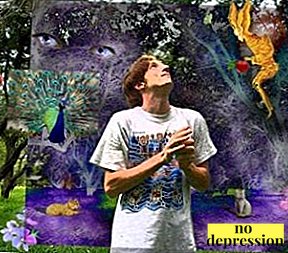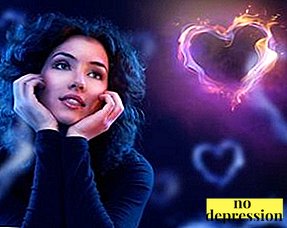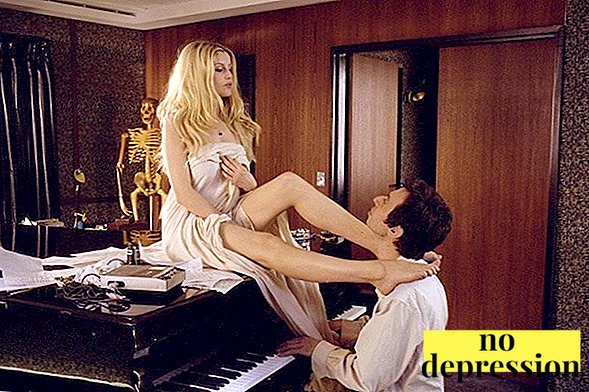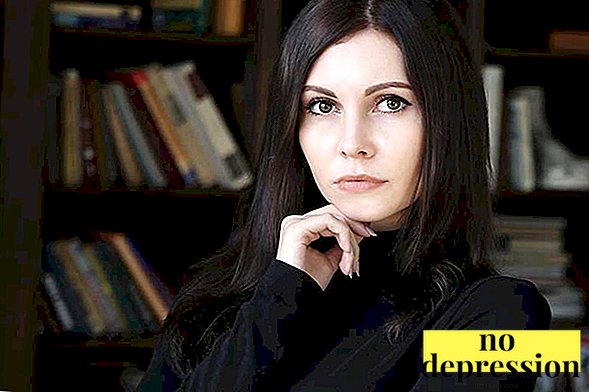A person can not only present what had happened to him before, what he saw or heard, with which he had direct experience, but also introduce completely new details, objects and phenomena with which he had never met - this is possible thanks to the imagination.
What is imagination, how does it happen and what does a person need?
Concept

Mental process consisting in creating new images, which are based on previously experienced experience, is called imagination.
Just as memory, thinking and perception, imagination is necessary for productive activities - before committing an act, planning a particular step, a person in advance mentally represents your actions in different variations, choosing the most appropriate way to realize your goal.
Almost all scientific and cultural achievements of mankind resulted from the work of the imagination - in order to come up with a fundamentally new idea, it is necessary not only to summarize all the existing experience, but also to add elements that did not exist to it before.
Briefly about the properties
Significant imagination is not only for scientists and artists, but also in the life of absolutely every person, because has the following properties:
- Relieves nervous tension in the process of mental satisfaction of human needs, smoothes the effects of conflict situations arising from social interactions.
- Assists in solving various practical problems in the mental study of various options for action.
- Anticipates the future, allowing you to plan steps to achieve certain goals.
- Regulates psycho-physiological activity organism, adjusts to perform certain tasks, increases concentration when performing activities of various kinds.
What is it like?

Imagination - quite a complex mental processAccording to certain properties, it can be classified into many groups, but all groups can be classified as two main ones.
Main types of imagination:
- Involuntary imagination (passive). This type of imagination is characterized by the fact that when images appear, a person does not use the force of will, that is, they arise involuntarily. A dream is best suited as an example of passive imagination.
In a dream, we can see such situations that we have never experienced in life, and we do not apply any volitional effort for the appearance of these images.
- Arbitrary imagination (active). With active imagination, we consciously evoke certain mental images, that is, we control their appearance. As an example, the writing of a book by a writer can be cited - the plot may differ significantly from the event that became its basis, being the work of the imagination of a literary figure.
- Anticipatory Imagination. One of the most important and necessary psychological functions for life is anticipation of the future, foreseeing the results of one’s own actions or actions. This function is associated with almost any human activity, and its roots go to the adaptive mechanisms of the brain. Directly traced its relationship with the instinct of self-preservation, as such inclinations exist in animals.

For example, a person does not need to have experience of falling from the 10th floor in order to understand that it is dangerous for life - by anticipating the situation following this actionThe presented picture of injuries and injuries causes a feeling of fear that saves from such an imprudent step.
Disturbed, sick imagination. There are the following violations:
- Oneroid. Clouding caused by physiological disturbance of the brain as a result of traumatic brain injury, infectious diseases, intoxication.
- Onyrism. The absence of differences in dreams and reality.
In this case, the appearance of bright images in the daytime with briefly closed eyes is possible.
- Pathology of active imagination - lack of criticality to the products of its activities.
- Sleep epileptic seizures - stereotypical, monotonous dreams of a frightening nature, in which, as a rule, red predominates.
The classification of imagination in psychology
In psychology, there are several approaches to the classification of the imagination:
Types of imagination on the subject:
- figurative. Recreation of visual images;
- emotional. Representation of the emotional state;
- conceptual. Also called verbal-logical - representation of logical chains.

Kinds of imagination by results:
- Productive imagination - the creation of fundamentally new images or ideas that are not found in real life, not repeating the real human experience. Also called creative. For example, the creation of a cartoon character.
- Reproductive imagination - creating images based on the information provided. Also called recreating.
For example, the emergence of images in a person who suggests the correct path through unfamiliar terrain.
Depending on the nature of the image:
- specific - created images reflect existing real objects or phenomena. For example - an imaginary chair in the smallest detail;
- abstract - the created images are conditional, generalized. With its help, symbols, schematic solutions are created.
Depending on the form of manifestation:
- Fantasy. Creating unreal images with an emphasis on the fact that they are far from reality.
- Realistic. Inverse form of fantasy - images most accurately reflect reality.
- Dream. Images that reflect the desired future for a person.
- Dreams. The emergence of paintings, reflecting the desired future reality and having a positive emotional color.

Also distinguish the following forms of imagination:
- Agglutination. In this form, mentally, such phenomena, objects and objects, which in real life cannot be connected, are combined.
- Hyperbolization. It is based on the deliberate minimization or exaggeration of the characteristic properties of the object, the quantitative change of the parts that make up the object.
- Emphasis. Selection of individual properties of the object, characteristic only for him.
- Schematization. Selection of similar properties of several objects, their generalization by common features.
- Litola. The downplay of certain objective characteristics of the object.
By type of imagination is divided into the following:
- Visual type. Creation of visual, visual images. This type belongs to artists.
- Audio type. Sound performances. Most often, it involves musicians and singers.
- Kinesthetic type. Also called motor. Reflects motor performance. Peculiar to dancers.
Dream like a special kind

A special kind of imagination is the dream - ideas about the desired future.
A person can dream of his own success - a successful career, sudden wealth, total luck, unquestioned power, social superiority, the creation of remarkable works of art, the achievements of all mankind - the conquest of the stars, the eternal engine.
All images arising in the process of dreams have the following features.:
- They are detailed, are specific.
- Have a pronounced positive emotional coloring.
- Cause the desire to achieve them, the confidence that such a future is feasible.
- There is no idea of successive steps towards their achievement and realization in reality.
Despite the fact that the dreamer does not have a clear plan for achieving his goals, the dream itself is an important stimulus for human activity, supports motivation in difficult and hopeless situations, and gives strength to overcome difficulties.
For children, the dream is often not so much the kind of strategic focus that it creates. This is dream function.
In children

Types of imagination in children:
- Involuntary. Images created by younger children are extremely unstable. Under the influence of external stimuli, they often change. As a result - for a short time, the child easily changes a lot of games. Also, such children tend to impose the qualities of one object on another - they represent a pencil in the form of a rocket, etc. Every year the stability of the images grows, the kids can play longer games with a certain plot, return to the previous plot after the break.
- Arbitrary. The emergence of arbitrary images in preschool children, as a rule, occurs in the process of plot-role-playing games with adults.
Children under the age of 3 or 4 years old can sustainably act within the framework of the plot for no more than 10–15 minutes, whereas by 5 years it is possible to keep the game with a certain plot for several hours and even extend it in the following days.
The development of voluntary imagination occurs first under the influence of adults, but older preschoolers can independently plan their actions, they have a more stable motivation to complete the game plan.
- Reproductive. It appears most often in the representation of the characters of fairy tale characters. The child draws live images from the fairy tales read to him. Over time, he begins to distinguish between clearly fabulous characters from the real possible.
- Productive. On the average and in the senior preschool age, it manifests itself in inventing its own stories of fairy tales, adding to the characters non-existent characteristics in the classic version of the works. When drawing in older preschool age drawings become more detailed. New storylines can be added to games, and roles are usually allocated before the game begins.

Throughout his life, imagination helps a person not only to define strategic goals in the distant and near future, but also to help him get out of a difficult situation, maintain an even emotional background, generate new ideas.
The concept of types and ways of developing imagination:



